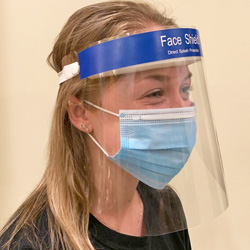From: Monona Rossol <0000012821515289-dmarc-request**At_Symbol_Here**listserv.med.cornell.edu>
Subject: Re: [DCHAS-L] New Publications from ACS Committee on Chemical Safety
Date: Fri, 19 Aug 2016 11:07:41 -0400
Reply-To: DCHAS-L <DCHAS-L**At_Symbol_Here**MED.CORNELL.EDU>
Message-ID: 156a357c3f4-840-6d63**At_Symbol_Here**webprd-a61.mail.aol.com
In-Reply-To <3D9C79E4-A5B9-4FEF-85B5-53B9D63E0EAA**At_Symbol_Here**dchas.org>
Also when I train chemists, I find they don't know the EH&S version of the definitions of gas, vapor, fume, dust (inhalable, respirable and nanoparticles), mists and smoke. I'd include this, too.
POINT TWO. Now, I'm going to ask you all, who I consider my pals and sparing partners, to help me with a problem that is related to this document. I need to convince a major university to cease requiring their art faculty to do risk assessments. They have e-mailed them volumes of information on risk assessments and their obligations. The faculty is completely confused and upset by this download. They don't understand a word of it. There is not one of the members of this faculty that could possibly qualify as "competent" to do a risk assessment.
Should someone in the art faculty be trained to do this? Absolutely. But EH&S cannot do this in a couple of seminars. The training is going to have to start from scratch since these people usually have had no chemistry at all.
And I think EH&S is unaware that highly toxic metals (lead, cadmium, etc.) highly toxic organic chemicals (pigments and dyes based on benzidine, aniline, anthraquinone, etc.), vast numbers of different and sometimes very complex solvents (in alkyd paints, thinners, accelerators, retardants, etc.), acids for etching and patina, and more are used. These are often the same chemicals used by chemists, except artists use them the open and in traditional ways that involve exposure.
EH&S is also unaware that art material labels and SDSs are faulty, purposely deceptive, or they withhold important information -- such as the names of the F*n ingredients.
I certainly will use these ACS guidelines to help make my case about what should be included in the training, but any additional ammunition from you people, especially from EH&S people with jurisdictions that include art departments, would be appreciated.
Monona Rossol, M.S., M.F.A., Industrial Hygienist
President: Arts, Crafts & Theater Safety, Inc.
Safety Officer: Local USA829, IATSE
181 Thompson St., #23
New York, NY 10012 212-777-0062
